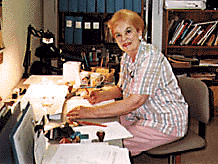 SUSPENDED ANIMATION #243
SUSPENDED ANIMATION #243
For our 1992 book, Animation Art: Buyer’s Guide and Price Guide, my friend and former writing partner John Cawley interviewed Phyllis Craig who John knew at the time as the Color Design Supervisor and Internship Coordinator at Film Roman.
Craig started as a painter on Peter Pan (1953) moved up to do inking, and, eventually doing color key work on Sleeping Beauty (1959). She left Disney in 1964 to raise a family, but soon found herself back in the business at Hanna-Barbera and then Marvel Productions and finally in 1987 at Film Roman. She passed away in May 1997 a few days after surgery for a brain tumor.
A founding member of Women In Animation and an active member of the Academy of Television Arts and Sciences, Phyllis was also President of the National Student Film Institute. In 1990, she received the Grimmy Award from the Los Angeles Student Film Institute for her devotion and service to animation education. She was much beloved by everyone in the animation industry not only for her own skill but as a respected and caring mentor to others and was sometimes referred to as the “studio Mom”.
Her death inspired the creation of annual Women in Animation scholarship fund in her honor and the deadline each year is April 29, her birthday.
Here is an excerpt from that interview with Craig where she talked about working at Disney:
It really was fun. It was like working on a college campus. This was back in the 1950s and 1960s, when Walt was alive. The painters in those days. We always called each painter “a Disney Girl.” It seemed all of us had a lot in common even though we came from different backgrounds.
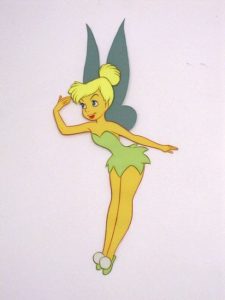 If you lasted as an inker or a painter you seemed to assimilate this sameness. We all became social friends. When someone new came to work there, you could almost say, “she’s going to make it and she isn’t.” The girls all had a feeling of camaraderie. It was a privilege to be working at Disney. There was never any negativity that I knew of. But then I wasn’t management!
If you lasted as an inker or a painter you seemed to assimilate this sameness. We all became social friends. When someone new came to work there, you could almost say, “she’s going to make it and she isn’t.” The girls all had a feeling of camaraderie. It was a privilege to be working at Disney. There was never any negativity that I knew of. But then I wasn’t management!
The paints were a gum-based paint. We used them quite thick in consistency. The painters floated them on and had to be very careful not to overlap colors, like you can now, because a lot of the Disney colors bled. You had to know which colors held their pigments better. They mixed the paint at the Disney studio from pigment, so each production had its own palette.
The palettes had fun names like “smog green” and “dreiss” which was a color named after one lady who always wore a unique chartreuse green and we used that color for Tinker Bell. It was just a fun period. We had any amount of colors and any palette we wanted. If they didn’t have what we wanted, they’d make it.
The inking department was considered very much above the painting department, because they had to have special skills to become an inker. I became an inker for a time. We had charts showing the ink lines going through what would almost be a hair line into a heavy line for the animation we did for television.
They had the inking department upstairs, which we never understood. We inked so fine, the people had to shuffle through the corridor. You couldn’t walk through or it would shake the floor and ruin the inking.
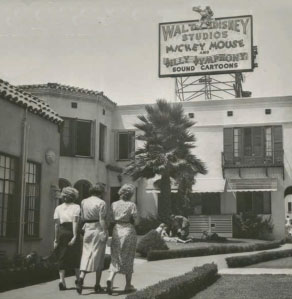 The one thing about Disney, compared to everywhere else I worked is that you had time. When we did a feature, we did it until we finished it. There wasn’t a pre-determined “finish date”, a time we had to be done by. At least I was never aware of one. We took six years to do Sleeping Beauty!
The one thing about Disney, compared to everywhere else I worked is that you had time. When we did a feature, we did it until we finished it. There wasn’t a pre-determined “finish date”, a time we had to be done by. At least I was never aware of one. We took six years to do Sleeping Beauty!
It was really a different world. The surroundings were unique. We could go to the backlot on our coffee breaks and watch them filming a movie or TV show. We could go into the music department and watch them recording. Everything was there and it was a wonderful place to be.
Most of the painters didn’t even know how a cartoon was made. They knew nothing but their jobs. That was it. They had no idea of how anything else worked. We were not really allowed to mix with the animation people. We were jokingly called “The Nunnery” in those days because we had to be separated so we wouldn’t be distracted by the young men. It never bothered me, because I was already married.
Until I came, and some others who were my age level showed they were interested in learning more than one job, the girls were pretty much tunnel-visioned. The only people who worked with and met other departments were color key and Grace Bailey who was head of the entire Ink and Paint department. So even the supervisors of ink and paint really had no direct contact with any of the animation people.
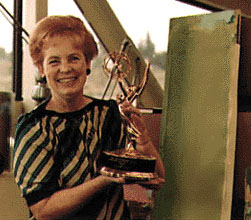 When the Xerox process came in, we ended up with all the inkers being laid off, except two or three to do registration. Disney then offered to put them on the Xerox crew or the few that had painted could, horrors forbid, go back to painting. A few of them went to WED. In fact one of the top inkers ended up at WED working on the Tiki Room and eventually became a supervisor at WED.
When the Xerox process came in, we ended up with all the inkers being laid off, except two or three to do registration. Disney then offered to put them on the Xerox crew or the few that had painted could, horrors forbid, go back to painting. A few of them went to WED. In fact one of the top inkers ended up at WED working on the Tiki Room and eventually became a supervisor at WED.
But at first it was scary because of the layoff. Of course, the inkers and painters still in the studio did not want to work on the Xerox crew. They felt that it was production line work. The inkers were very upset about it. So were the painters because they didn’t like painting to the Xerox line. After a couple of years, everyone got used to it and it just became another part of the process.
I think that the hand-inked cels that we did at Disney in the old days, as opposed to the Xerox cels, are a piece of art. The hand inking was fantastic. I did it myself then, but I couldn’t do it now. It often took longer to ink a cel than it did to paint it.
King Stephan and King Hubert from Sleeping Beauty had about 16 colors of ink, so you’d have 16 ink jars lined up in front of you. Everybody’s ink lines had to match. Everybody’s ink line had to have the same tapered feeling to it. It was really an art form. I had to agree with Grace Bailey when she said, “You don’t just learn to ink, it’s something you have to really work at.” Any of the old, hand inked cels are really pieces of art.
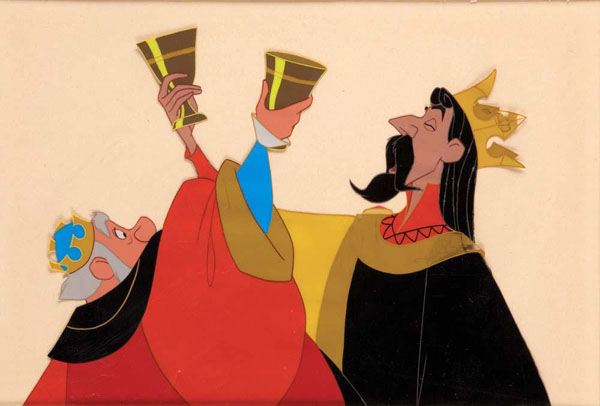


 Jim Korkis is an internationally respected animation historian who in recent years has devoted his attention to the many worlds of Disney. He was a columnist for a variety of animation magazines. With his former writing partner, John Cawley, he authored several animation related books including The Encyclopedia of Cartoon Superstars, How to Create Animation, Cartoon Confidential and Get Animated’s Animation Art Buyer’s Guide. He taught animation classes at the Disney Institute in Florida as well as instructing classes on acting and animation history for Disney Feature Animation: Florida.
Jim Korkis is an internationally respected animation historian who in recent years has devoted his attention to the many worlds of Disney. He was a columnist for a variety of animation magazines. With his former writing partner, John Cawley, he authored several animation related books including The Encyclopedia of Cartoon Superstars, How to Create Animation, Cartoon Confidential and Get Animated’s Animation Art Buyer’s Guide. He taught animation classes at the Disney Institute in Florida as well as instructing classes on acting and animation history for Disney Feature Animation: Florida.




















































Thanks for another fascinating look inside the Disney studio during its glory days. Isolating women in a few departments would have drastically impeded upward mobility within the organisation, which makes Phyllis Craig’s career all the more remarkable. It’s good to know it was such a positive experience for her.
I’ve noticed quite a lot of inking errors in early Mickey Mouse cartoons, where for example Mickey’s tail, or even a set of background characters, will disappear for a frame or so. By the fifties there must have been some strict quality control guidelines in place; the ink and paint work in Disney features of that time, especially Sleeping Beauty, is extraordinarily fine. Craig was right: every painted cel was a real work of art.